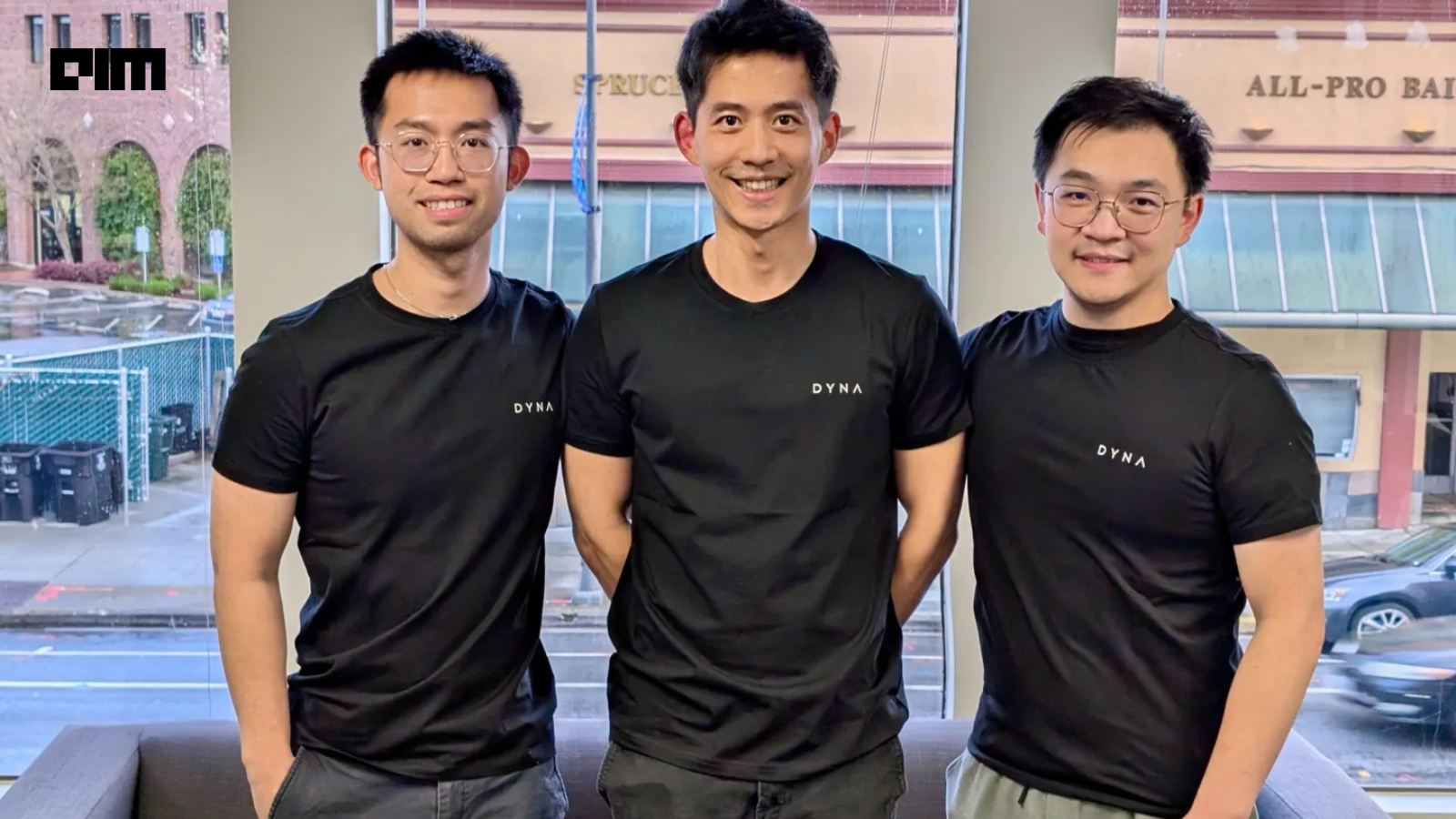When Lindon Gao, York Yang, and Jason Ma founded Dyna Robotics in 2024, they were not entering unfamiliar territory. Gao and Yang had previously built Caper AI, a company that applied computer vision and hardware to create AI-powered shopping carts, which sold to Instacart in 2021 for $350 million. Ma, a former DeepMind research scientist, had spent his career developing foundation models for robotics. Their new venture was designed around a straightforward conviction: advances in AI would only be fully realized when machines could perform useful physical work outside the lab.
In just over a year, the Redwood City-based startup has raised more than $140 million, including a $120 million Series A announced in September. Investors range from early-stage venture firms like CRV and First Round Capital to corporate funds from Nvidia, Amazon, Salesforce, Samsung, and LG. The company is now valued above $600 million.
From Demonstration to Deployment
The company’s central product is DYNA-1, a robotics foundation model that powers stationary robotic arms. Unlike traditional robots that rely on scripted instructions, DYNA-1 is designed to generalize across environments. According to the company, the system achieved more than 99% uptime during a 24-hour continuous operation test. Within six months of launch, its robots were running up to sixteen hours a day in hotels, restaurants, laundromats, and gyms, performing tasks such as folding napkins, towels, and clothing.
Jason Ma described the company’s approach: “Scalable real-world robot learning systems need to master and generalize many manipulation skills. To achieve the best performance on complex tasks, Dyna’s foundation models are developed to enable general world understanding while learning from the models’ own experience for rapid online learning”.
York Yang highlighted the customer demand that shaped DYNA-1’s development. “We’ve met with hundreds of customers across industries, and the number one thing they want, unequivocally, is performance, measured by speed and quality”. DYNA-1, he added, is intended to deliver results at commercial-grade throughput levels rather than experimental benchmarks.
Competing in a Crowded Robotics Market
Dyna’s claim of being the first to deploy a single-weight, general-purpose foundation model that can function across different commercial environments is a central part of its strategy. Most robotics startups focus on specialized hardware or narrow applications. By contrast, Dyna is betting that a generalizable model, similar in spirit to the large language models in software AI, can drive scale by enabling one system to handle a range of repetitive, dexterous tasks.
This approach carries both promise and risk. General-purpose robots have long been a goal in robotics, but commercial adoption has often lagged due to cost, fragility, and limited adaptability. Dyna’s backers argue the company is addressing these obstacles directly.
The robotics sector has seen $12.1 billion in funding in the first half of 2025 alone, and Dyna is entering a market where competitors range from industrial incumbents to startups experimenting with humanoid robots. Unlike firms pursuing full human-like mobility, Dyna has chosen to focus on stationary tasks that can still absorb large volumes of labor. According to Gao, the ultimate goal is to unlock physical AGI. For now, that ambition runs through tasks like folding and packaging.
The Road Ahead
The $120 million Series A is intended to expand the company’s research and engineering teams and accelerate development of its next-generation foundation model. The company currently has about 30 employees and is hiring aggressively.
Dyna’s trajectory will depend on whether its technology can scale beyond pilots into sustained, revenue-generating deployments. Early results suggest durability and adaptability in real-world environments, but the challenge will be in replicating those outcomes across many customer settings.
For Gao, the project is framed in historical terms. “We’re at a very unique point in human history when AI is maturing, hardware is accelerating, and the demand for labor has never been higher,” he said in a recent announcement. If that convergence proves durable, Dyna’s effort to move AI out of the browser and into physical workspaces could mark a significant test case for the broader robotics industry.











